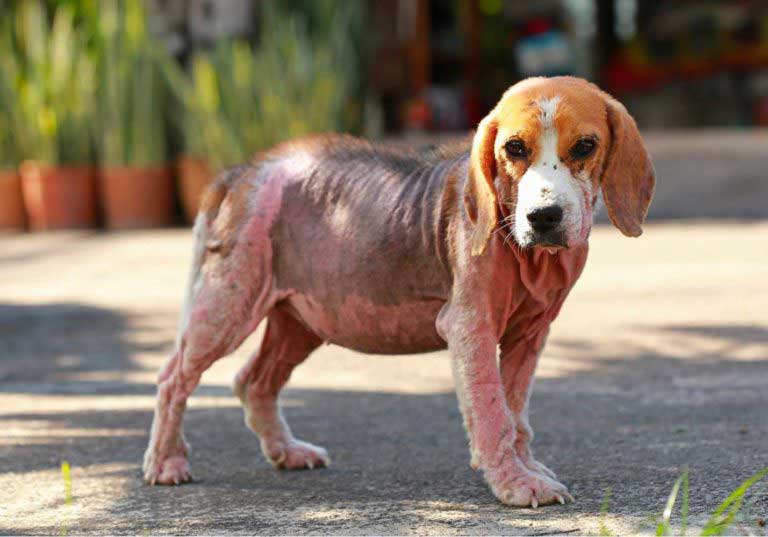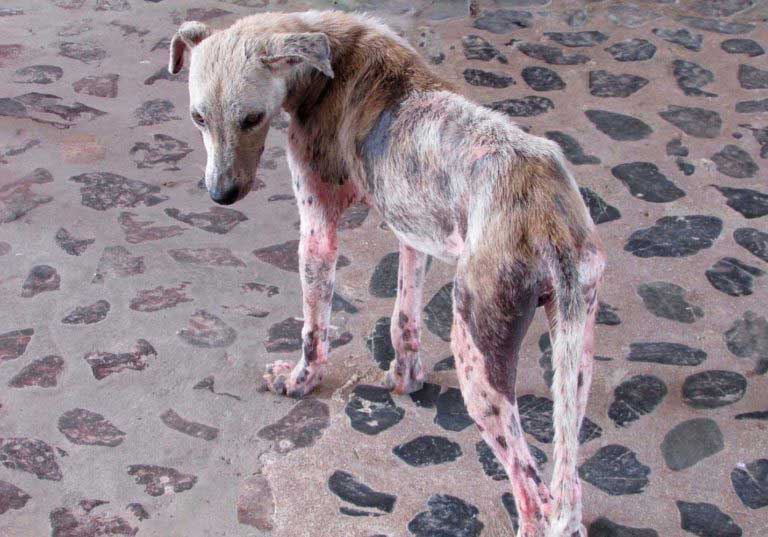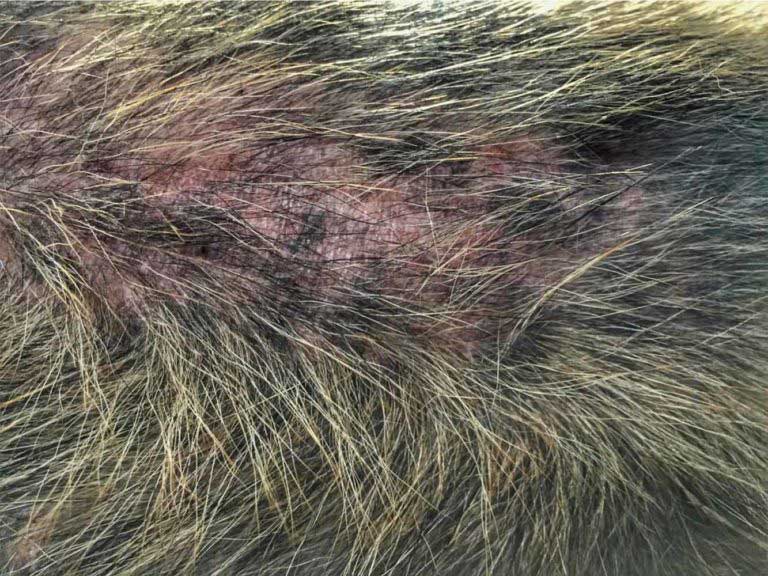Does My Dog Have Mange?

If your dog is scratching and begins to lose hair, mange may not always immediately spring to mind as the cause. After all, when we hear the word “mange,” we may think of sick dogs that emerge from hoarding cases or puppy mills. Further, the term “mangy mutt” is usually used for neglected street dogs.
Mange often infects dogs with poor immune systems, such as malnourished dogs or puppies. It is not the case only for young, stray, neglected, or abused pups. That’s because certain types of mange-causing mites always live on your dog. So let’s start by learning what mange is, and the different kinds that may plague your dog—and your family!
I Mites—tiny parasitic arachnids related closely to ticks—cause the skin disease that we refer to as mange. There are two main types of dog mange: sarcoptic and demodectic. We can see neither of these easily without the aid of a microscope.

Sarcoptic Dog Mange
Sarcoptic mange is caused by the highly contagious Sarcoptes scabiei var canis mite. It can be passed to humans. Contrast this with human scabies caused by the Sarcoptes scabiei var hominis mite that completes its life cycle on its human host. While the canine variety of the sarcoptic mite can be passed to others, it does not complete its life cycle on humans. So, while humans experience intensely itchy skin for around two weeks if they come in contact with canine scabies, the mites will die off without a canine host.
For the infested dog, however, the intense itching and resulting hair loss from scratching will last until your vet can provide adequate treatment. The infestation can progress until the dog is hairless or nearly hairless. Additionally, sores and crusted-over skin can make life miserable for pets. In extreme cases, sarcoptic mange can lead to death.
Sarcoptic mange begins after direct or indirect contact with an infected animal or an item, such as bedding. About 10 days to 8 weeks later, symptoms may begin to appear. At that time, the female mite had a chance to burrow into the dog’s skin and lay her eggs. The eggs hatch and begin to feed on the host dog’s skin. They spread quickly as the new mites reproduce and continue the life cycle.
Diagnosing and Treating Sarcoptic Mange
Your veterinarian will take skin scrapings and examine them under a microscope. This will help determine if your dog has mites and what type of mite is present. Treatment will vary depending on the severity of the infection. It can include topical and oral medications to kill the mites and soothe the skin. The vet will also recommend treating your dog’s bedding and other soft surfaces in the home to prevent reinfestation.

The second type of mange we’ll be discussing here is a little less scary—it’s demodectic mange.
Demodectic Dog Mange
We have the Demodex mite to thank for demodectic mange. These microscopic mites live in the dog’s hair follicles and are an always-present, normal inhabitant of a dog’s skin. It’s only when the immune system can’t control the mite population that they become a problem and cause skin issues. These mites are not contagious to humans, as these are a different type of Demodex mite than found living on our skin. (That’s right, we have mites too!)
A normal immune system can control these Demodex mites and prevent them from reproducing in large numbers. However, if your dog’s immune system is suppressed or less functional, these mites can take advantage and spread like wildfire. This means that the most at-risk pets are dogs who are very young, elderly, neglected, or have other underlying illnesses (such as Cushing’s disease or diabetes). Some therapies and medications (such as chemotherapy or steroids) can also suppress the immune system and increase the risk for your pet.
Symptoms in infected dogs include hair loss, red/inflamed skin, and thickened skin—with or without itching. Your vet will take a skin scraping to look for the presence of demodectic mites under a microscope.
Treating Demodectic Mange
Small areas of demodectic mange may resolve themselves on their own, but there is a chance that the condition can continue to progress. Treatments include medications for the itching and to bring down the mite population. In severe cases involving an otherwise healthy dog, your vet may also want to run additional tests to identify the cause of a weakened immune system.
Can I just treat mange myself?
While there are a plethora of home remedies to be found, many of these—even natural products—can result in burns to a dog’s already inflamed skin. They can also cause harm to your dog’s respiratory system or be toxic if ingested by licking the treated area.

Keep in mind too, that both sarcoptic and demodectic mange can have the same symptoms, including hair loss and lesions on the skin and around the eyes. These can also be the symptoms of other skin diseases or allergies and can be difficult to differentiate, especially in the early stages. So it’s best to have your vet properly diagnose your dog and start the appropriate treatment.
If you suspect your dog may be experiencing skin discomfort, we can help! Give us a call today and together we can help your dog find relief.
